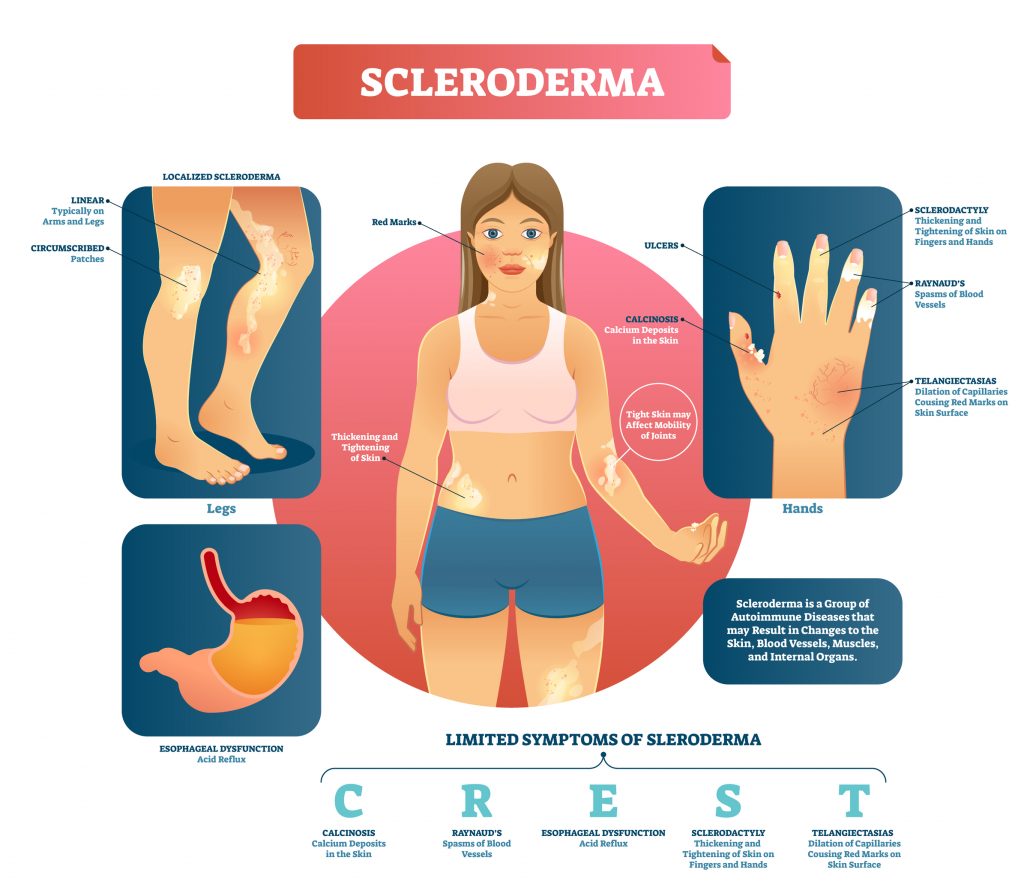 Scleroderma is a connective tissue disease of unknown etiology with a chronic course. Due to the deposition of the extracellular matrix such as collagen fibers, the disease can cause multiple system damages, leading to localized or diffuse skin thickening and fibrosis. Internal organs such as the digestive tract, lungs, heart, and kidneys may also be affected (systemic scleroderma). Common symptoms are Raynaud’s phenomenon, fatigue, musculoskeletal pain, etc. Scleroderma is more likely to infect women, and the most common age is 30 to 50 years. Although there is no cure for scleroderma, a variety of treatments can relieve symptoms and improve quality of life. Current research shows that scleroderma is associated with HLA-1 genes, as well as various immune cells and inflammatory factors such as B cells, Tn2, Th17, etc. may also participate in the pathogenesis.
Scleroderma is a connective tissue disease of unknown etiology with a chronic course. Due to the deposition of the extracellular matrix such as collagen fibers, the disease can cause multiple system damages, leading to localized or diffuse skin thickening and fibrosis. Internal organs such as the digestive tract, lungs, heart, and kidneys may also be affected (systemic scleroderma). Common symptoms are Raynaud’s phenomenon, fatigue, musculoskeletal pain, etc. Scleroderma is more likely to infect women, and the most common age is 30 to 50 years. Although there is no cure for scleroderma, a variety of treatments can relieve symptoms and improve quality of life. Current research shows that scleroderma is associated with HLA-1 genes, as well as various immune cells and inflammatory factors such as B cells, Tn2, Th17, etc. may also participate in the pathogenesis.
The diagnosis methods of scleroderma are as follows:
The scleroderma diagnostic kits developed by Creative Biogene adopts enzyme-linked immunoassay technology. In the past, it seems that some trace biologically active substances that are difficult to carry out in quality can be easily detected by our kits. Our products have high sensitivity, detection time, low cost, simple operation, and a variety of samples can be detected.
Creative Bioarray focuses on the field of diagnostic reagents for scleroderma. We are committed to providing the best products to accelerate the realization of customers' research goals. We look forward to working with you for your cooperation.
Please contact us for more details.
Reference
Copyright © 2026 Creative Biogene. All rights reserved.